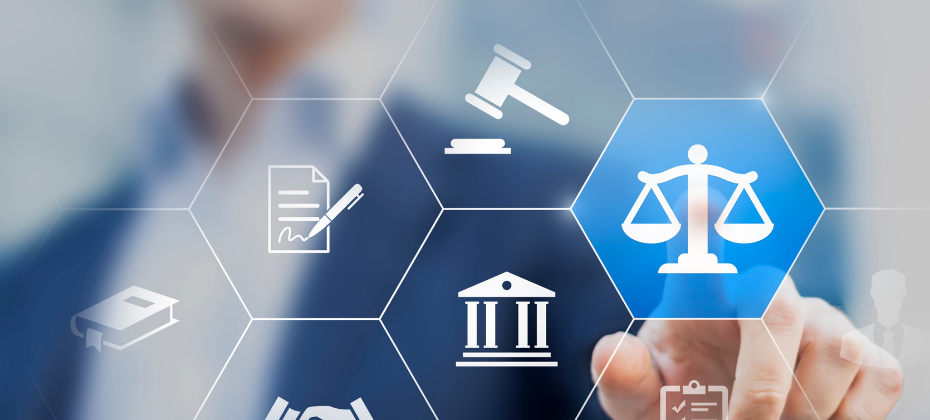Latest Posts

The automotive finance market is beginning to level out to pre-pandemic trends in Q2 2021.

The collections landscape is changing as a result of new and upcoming legislation and increased expectations from consumers. Because of this, businesses are looking to create more effective, consumer-focused collections processes while remaining within regulatory guidelines. Our latest tip sheet has insights that can help businesses and agencies optimize their collections efforts and remain compliant, including: Start with the best data Keep pace with changing regulations Focus on agility Pick the right partner Download the tip sheet to learn how to maximize your collections efforts while reducing costs, avoiding reputational damage and fines, and improving overall engagement. Download tip sheet

As last year’s high-volume mortgage environment wanes, lenders are shifting focus to address another set of challenges. Continued economic uncertainty lingers as consumers navigate towards recovery. As such, mortgage lenders have less clarity than normal to assess risk and measure performance in their servicing portfolios. On top of that, more lenders are struggling with customer retention than ever before, due to a historically low rate environment in 2020. These combined factors create a new set of challenges servicers will face in the coming months. We explore a few of these challenges below. An incomplete picture of risk The CARES Act accommodation reporting structure has made it challenging for servicing teams to fully understand the impact of forbearance in their portfolios. If looking only at a CARES Act accommodated borrower’s credit profile, there is no indication whether that consumer would otherwise be delinquent or headed towards default. In turn, lenders cannot model out risk based on this information alone. Borrowers’ financial situations can still change rapidly, and some are still struggling to regain their financial footing. Property data also plays a part in a holistic view of risk. Partly due to lack of housing inventory, home equity continues to rise in many areas of the country, yet there is still uncertainty around whether prices are overinflated, whether the market will correct itself and by how much, and the impact the foreclosure moratorium may have on one’s portfolio. And property dynamics continue to change due to consumer migration stemming from the onset of virtual or hybrid work environments, where homeowners are less bound geographically to a place of work. Being able to have insight into a holistic view of risk is critical to navigating the upcoming months in mortgage servicing. Low borrower retention 2020’s prevailing low-rate environment continues to persist well into 2021 creating a big challenge for mortgage servicers in terms of borrower retention. Borrowers continue to be incentivized to refinance, and in some instances multiple times, to capture the savings throughout the life of their mortgage. Every time a borrower refinances, the lender who’s servicing the loan risks losing the borrower to another lender. This portfolio runoff can create losses for the lender; high portfolio run off rates have shown to negatively impact portfolio performance and investor credibility while increasing marketing cost for new customer acquisition. In our Mortgage in 2021 webinar, we point to the sheer magnitude of this – at the end of 2020, a whopping 33% of first mortgages were less than a year old. Additionally, with the uptick in the number of fintech mortgage lenders and aggregation websites, it has become increasingly easy for consumers to shop for alternative options. Being able to predict the consumers likely to refinance can help servicers retain existing customers and reduce losses. Lack of operational efficiency Lenders and servicers had to increase the capacity of their systems, oftentimes at the turn of a dime, due to last year’s record-breaking origination volumes. This led to massive growing pains while simultaneously stress-testing a company’s systems and processes. As a result, the overall cost to produce a mortgage has risen. Borrower data hygiene poses a challenge for many servicers as well. There was a lot of movement in 2020 in terms of mergers and acquisitions which may also affect servicers’ operational efficiency. Marrying several disparate data points during such events can lead to borrower data inconsistencies and duplicates across loan origination systems. And as consumers come out of forbearance or deferral status, servicers are managing more calls to their inbound call centers, increasing the scope of the problem. Having tools to ensure data accuracy and correct consumer contact information can help reduce operating cost. Conclusion There certainly is a lot of pressure on servicers to optimize and be in a position to efficiently help homeowners in need as forbearance and foreclosure moratoriums end. But with the right data, insights and partners, mortgage servicers can navigate these challenges all while managing risk and enabling the business to grow safely. In our next blog, we highlight what forward-thinking lenders and servicers are focusing on now to navigate the upcoming months in mortgage servicing. Learn more

The Telephone Consumer Protection Act (TCPA), which regulates telemarketing calls, autodialed calls, prerecorded calls, text messages and unsolicited faxes, was originally passed in 1991. Since that time, there have been many rulings and updates that impact businesses’ ability to maintain TCPA compliance. Recent TCPA Changes On December 30, 2020, the Federal Communications Commission (FCC) updated a number of TCPA exemptions, adding call limits and opt-out requirements, and codifying exemptions for calls to residential lines. These changes, along with other industry changes, have added additional layers of complication to keeping compliant while still optimizing operations and the consumer experience. Maintaining TCPA Compliance Businesses who do not maintain TCPA compliance could be subject to a lawsuit and paying out damages, and potential hits to their reputation. With the right partner in place, businesses can maintain data hygiene and accuracy to increase right-party contact (and reduce wrong-party contact) to keep collections streamlined and improve the customer experience. Using the right technology in place, it’s easier to: Monitor and verify consumer contact information for a better customer experience while remaining compliant. Receive and monitor daily notifications about changes in phone ownership information. Maintain compliance with Regulation F by leveraging a complete and accurate database of consumer information. When searching for a partner, be sure to look for one who offers data scrubbing, phone type indicators, phone number scoring, phone number identity verification, ownership change monitoring, and who has direct access to phone carriers. To learn more about how the right technology can help your business maintain TCPA compliance, visit us or request a call. Learn more

I woke up early this morning to get my run in on the treadmill before starting my day. As I listened to music on my Pandora account, I saw an advertisement for my local Ford dealer. Later in the week, I was streaming my favorite show, and on came an advertisement suggesting I service my vehicle at the same local Ford dealer. When I checked my email on Tuesday, I remembered I wanted to schedule my service. Then came the letter with an option to check the appraisal for my vehicle. Now, I am fully shopping!!! Why you ask? Because the marketing message across so many channels set the stage for my interest. According to Google, multi-channel users will have a 30 percent higher lifetime value compared to single channel users. As contemporary society grows more attached to streaming services, social media and their cell phones, it is imperative to market to consumers where they spend time. Why then do so many automotive marketing companies only offer direct mail and email? Simple− those two forms of communication have been around for decades and can be the most cost effective to provide. While direct mail marketing is effective, utilizing the power of social media, streaming services and other digital platforms effectively puts your message in front of consumers. While I can toss the letter on my desk for later reading, the video commercial during my television streaming cannot be set aside. Multi-channel marketing combines various platforms to amplify your campaign’s frequency and reach, creating more effective messaging. One channel is often not enough for a robust marketing campaign since audiences tend to frequent many different channels. Experian’s Automotive Intelligence Engine with Marketing Creative & Fulfillment executes the strategic marketing plan created in AIE with true multi-channel messaging. This end-to-end solution utilizes Experian’s world-class data to create a powerful, brand-specific marketing strategy that resonates with your buyers by reaching their inbox, mailbox, screen and desktop −where they spend the most time.

Over the last year and a half, strong trends emerged in how businesses and consumers interact online - specifically when validating identities and preventing fraud. We initially explored these trends at a global level, and now we've explored U.S.-specific insights into online security, the customer experience, and digital activities and operations. Download the North America findings report to learn more about business and consumer fraud and identity trends impacting the way we live, work, and interact. Review your fraud strategy

Millions of consumers lack credit history and/or have difficulty obtaining credit from mainstream financial institutions. As a result, the use of expanded Fair Credit Reporting Act (FCRA) – or alternative – data has continued to gain popularity among lenders and financial intuitions to enrich decisions across the entire lending lifecycle to meet the financial needs of their consumers. Experian presented in a recent webinar hosted by AFSA, where Alpa Lally, Vice President of Product Management, and David Elmore, Automotive Solutions Consultant, had a chance to speak about the benefits of FCRA data, and ways lenders can leverage this data to ease access to credit for “invisible” and below prime consumers. Watch the full webinar, “FCRA Data: The Key to Unlocking Credit Universe” and learn more about: How expanded FCRA data is being used throughout the lending lifecycle The benefits of leveraging FCRA data including providing a more holistic view of a consumer’s credit profile and behavior beyond financial services, leading to smarter, more informed lending decisions The lift FCRA data can offer when augmented with traditional credit data This webinar is a part of AFSA’s partner webinar series. To learn more about FCRA data and explore related content, please visit our FCRA Alternative Credit Data Resources Page. Learn More About FCRA-Alternative Credit Data

Have you ever wanted to ask a customer to sign an AutoCheck vehicle history report to indicate they have received and reviewed the report and they are aware of the status of the vehicle they are purchasing?

As lenders and consumers emerge from the pandemic, predicting the attributes of the “new normal” will be difficult. Consumer demand, credit characteristics and economic conditions have all been affected by the pandemic – changing the way we think about doing business. Regulators and legislators have also developed new priorities and expectations for financial institutions. Clint Ivester, Experian’s Solutions Consultant and VP of Sales, joined Lee Gilley and Jonathan Kkolodziej, Partners for Bradley, to share their observations from the past year at AFSA’s 2021 Independents Conference. They also discussed recommendations financial institutions should consider to achieve the best possible posture with respect to compliance and business readiness. Here are a few Q&A highlights: Q: How are stimulus packages and increased government spending affecting economic conditions? A: [Ivester]: Our Experian forecast shows that the economy will grow 6% in 2021. That is well above the 2.5% average we have seen over the last four decades and highest rate since 1983. While the economy is oriented toward growth, how strong that growth is going to be will really depend on how well things go when the “training wheels” are taken off, how robust the recovery is for lower-income workers, and how consumer spending habits have been altered by the pandemic. *Data sources include Bureau of Economic Analysis and Experian’s “COVID-19 Economics Scenarios” April 2021 Report Q: How should businesses be assessing future consumer demand, conditions, and broader economic conditions over the next few quarters? A: [Ivester]: To answer this question, we should consider some factors including unemployment. What happens with lower income workers will have a big impact on where consumer spending goes post-stimulus. While the overall economy is set for solid growth there are still 8 million people out of work with the vast majority being lower income workers. Employment for lower income workers is still down more than 20%. These workers are set to lose the most by the phase out of the federal pandemic unemployment programs and are the highest risk to lose all unemployment benefits. However, if we see a strong jobs recovery – as is very possible – in bars, restaurants, hotels and other industries, these individuals will return to more normal spending habits and consumer spending should remain robust. *Data source includes Opportunity Insights Economic Tracker Watch the full session to hear more about the discussion. For more resources and content on this topic, please visit our Look Ahead Resources page or contact us for more information.

Ransomware needs to be on your radar. Here’s why. Ransomware review Ransomware is a cyberattack where cybercriminals take over an organization’s computer network with malware. Once they assume control, the criminals demand a ransom to restore the victim’s encrypted data access. With an estimated generation of $412 million in 2020 alone1, the frequency of these attacks is growing. At Experian, we handle many data breach cases and know that 7 of 10 breaches involve ransomware. This summer, NetDiligence dedicated a panel at its Cyber Risk Summit on the Lifecycle of a Ransomware Event and invited us to talk about our solutions to help business leaders prepare to minimize interruptions spurred by ransomware. The lifecycle of a ransomware attack includes five stages: 1. Attack Bad actors attack to discover assets, take data, extort it for direct payment, or profit from reselling data on the dark web. They can also launch a ‘double-take’ attack: first collecting ransom to access data and demanding secondary payment to keep it off the dark web. Hackers prey on company networks, searching for vulnerabilities and accessing encrypted files through phishing or planting malicious links to infect the network with malware. More than double the global rate of 14%2, U.S ransomware attacks have become more aggressive, accounting for 30% of all cyberattacks in 20202. At Experian, we’ve seen an even higher occurrence, with 59% of the events serviced 2021 to date involving ransomware. 2. Discovery Once attackers infiltrate a system, they demand a ransom for the decryption key to unlock the encrypted files. Companies usually discover the attack through a ransom note emailed to an executive, a file left on a server, or even a flashing warning on all connected computers. If they leave a message including their contact information, ransom sum, payment delivery time, and consequences for unmet conditions, such as tipping off the media, releasing stolen data, or selling it on the dark web. Next, companies will contact their cyber insurance carrier to log stolen information, get systems back online, navigate legal issues, and facilitate hacker negotiations. Since only about one-third of companies have cyber insurance, most will rush to hire cybersecurity counsel post-attack3, amounting to more stress and delays since it can take months for large companies or those without backups to determine the extent of the damage. At Experian, almost all events involving ransomware take about 20% more time to begin breach notification. Whether there is an incident plan in place or not, companies experience immense panic. 3. Negotiation Typically, a company will hire a professional, either directly or through their cyber insurance, to negotiate with hackers. While hackers expect price haggling, the ransom price could still be hefty. According to the cybersecurity firm, Coveware, the average ransom was $154,000 in Q4 2020, down from $230,000 the year before4. But hackers can drive up the price. Prime example: JBS, the world’s largest meat processor, paid an $11 million ransom in June 2021 to prevent customer data from being compromised. In a perfect world, the ransomware negotiation process goes this way: Establish communication with the attackers Obtain proof of decryption Obtain data exfiltration proof Negotiate a (huge) discount Celebrate Unfortunately, negotiations can be tricky, and the process rarely goes this way. Sometimes attackers go “dark” or request additional payments. Additionally, decryption tools may have bugs that skip mapped network drives or skip folders with long paths and unusual characters. An investigation is key to determine how hackers got in, what was exposed, and if they still have access—knowing exactly how and what was compromised will help in the negotiation. 4. Settlement After the ransom negotiations are over, companies must carefully consider the strategy behind the decision to pay or not to pay the ransom. The FBI generally discourages ransom payments because they may entice other criminals to engage in ransomware and paying does not guarantee data recovery. Additionally, the Office of Foreign Asset Control (OFAC) has payment bans and restrictions that support national security that must be upheld or face fines. At this stage, companies need to ensure that the ransom settlement does not violate constantly evolving regulations. If companies settle, the payment will typically be delivered via cryptocurrency like Bitcoin since it is harder to detect the payees. The hackers will mix the bitcoin for others diluting the currency flow and making it difficult to trace. 5. Post-Event For many companies, the settlement is just the beginning of ransomware attack costs. Companies will also have to pay to restore back-ups, rebuild systems and implement stronger cybersecurity controls to avoid future attacks. As discussed at the Cyber Risk Summit, here are five recommendations for companies to enforce tighter cyber control: Advanced Endpoint Monitoring System Restrict Remote Desktop Protocol (RDP) Regularly Update Software and Operating Systems Implement Password Management Policies Establish and Update Incident Response Plan and Ransomware Playbook Ransomware is just getting started. To minimize the impact of an attack, companies create a proactive preparedness plan. Determining to protect and scan for threats, establish negotiation and payment rules, and external breach communications, is critical. Breaches are our business at Experian. We know ransomware breaches have more complex FAQs, letter versions, and increased call center escalations. To learn how Experian’s Reserved Response solution can prepare your business for a data breach, click here. Sources: 1 Washington Post, “How Ransomware Attacks Work”, July 2021 2 Verizon 2021 Data Breach Investigations Report 3 Washington Post, “Ransomware Axa Insurance Attacks”, June 2021 4 Covewave, “Ransomware Marketplace Report”, Q4 2020

Lately, I’ve been surprised by the emphasis that some fraud prevention practitioners still place on manual fraud reviews and treatment. With the market’s intense focus on real-time decisions and customer experience, it seems that fraud processing isn’t always keeping up with the trends. I’ve been involved in several lively discussions on this topic. On one side of the argument sit the analytical experts who are incredibly good at distilling mountains of detailed information into the most accurate fraud risk prediction possible. Their work is intended to relieve users from the burden of scrutinizing all of that data. On the other side of the argument sits the human side of the debate. Their position is that only a human being is able to balance the complexity of judging risk with the sensitivity of handling a potential customer. All of this has led me to consider the pros and cons of manual fraud reviews. The Pros of Manual Review When we consider the requirements for review, it certainly seems that there could be a strong case for using a manual process rather than artificial intelligence. Human beings can bring knowledge and experience that is outside of the data that an analytical decision can see. Knowing what type of product or service the customer is asking for and whether or not it’s attractive to criminals leaps to mind. Or perhaps the customer is part of a small community where they’re known to the institution through other types of relationships—like a credit union with a community- or employer-based field of membership. In cases like these, there are valuable insights that come from the reviewer’s knowledge of the world outside of the data that’s available for analytics. The Cons of Manual Review When we look at the cons of manual fraud review, there’s a lot to consider. First, the costs can be high. This goes beyond the dollars paid to people who handle the review to the good customers that are lost because of delays and friction that occurs as part of the review process. In a past webinar, we asked approximately 150 practitioners how often an application flagged for identity discrepancies resulted in that application being abandoned. Half of the audience indicated that more than 50% of those customers were lost. Another 30% didn’t know what the impact was. Those potentially good customers were lost because the manual review process took too long. Additionally, the results are subjective. Two reviewers with different levels of skill and expertise could look at the same information and choose a different course of action or make a different decision. A single reviewer can be inconsistent, too—especially if they’re expected to meet productivity measures. Finally, manual fraud review doesn’t support policy development. In another webinar earlier this year, a fraud prevention practitioner mentioned that her organization’s past reliance on manual review left them unable to review fraud cases and figure out how the criminals were able to succeed. Her organization simply couldn’t recreate the reviewer’s thought process and find the mistake that lead to a fraud loss. To Review or Not to Review? With compelling arguments on both sides, what is the best practice for manually reviewing cases of fraud risk? Hopefully, the following list will help: DO: Get comfortable with what analytics tell you. Analytics divide events into groups that share a measurable level of fraud risk. Use the analytics to define different tiers of risk and assign each tier to a set of next steps. Start simple, breaking the accounts that need scrutiny into high, medium and low risk groups. Perhaps the high risk group includes one instance of fraud out of every five cases. Have a plan for how these will be handled. You might require additional identity documentation that would be hard for a criminal to falsify or some other action. Another group might include one instance in every 20 cases. A less burdensome treatment can be used here – like a one-time-passcode (OTP) sent to a confirmed mobile number. Any cases that remain unverified might then be asked for the same verification you used on the high-risk group. DON’T: Rely on a single analytical score threshold or risk indicator to create one giant pile of work that has to be sorted out manually. This approach usually results in a poor experience for a large number of customers, and a strong possibility that the next steps are not aligned to the level of risk. DO: Reserve manual review for situations where the reviewer can bring some new information or knowledge to the cases they review. DON’T: Use the same underlying data that generated the analytics as the basis of a review. Consider two simplistic cases that use a new address with no past association to the individual. In one case, there are several other people with different surnames that have recently been using the same address. In the other, there are only two, and they share the same surname. In the best possible case, the reviewer recognizes how the other information affects the risk, and they duplicate what the analytics have already done – flagging the first application as suspicious. In other cases, connections will be missed, resulting in a costly mistake. In real situations, automated reviews are able to compare each piece of information to thousands of others, making it more likely that second-guessing the analytics using the same data will be problematic. DO: Focus your most experienced and talented reviewers on creating fraud strategies. The best way to use their time and skill is to create a cycle where risk groups are defined (using analytics), a verification treatment is prescribed and used consistently, and the results are measured. With this approach, the outcome of every case is the result of deliberate action. When fraud occurs, it’s either because the case was miscategorized and received treatment that was too easy to discourage the criminal—or it was categorized correctly and the treatment wasn’t challenging enough. Gaining Value While there is a middle ground where manual review and skill can be a force-multiplier for strong analytics, my sense is that many organizations aren’t getting the best value from their most talented fraud practitioners. To improve this, businesses can start by understanding how analytics can help group customers based on levels of risk—not just one group but a few—where the number of good vs. fraudulent cases are understood. Decide how you want to handle each of those groups and reserve challenging treatments for the riskiest groups while applying easier treatments when the number of good customers per fraud attempt is very high. Set up a consistent waterfall process where customers either successfully verify, cascade to a more challenging treatment, or abandon the process. Focus your manual efforts on monitoring the process you’ve put in place. Start collecting data that shows you how both good and bad cases flow through the process. Know what types of challenges the bad guys are outsmarting so you can route them to challenges that they won’t beat so easily. Most importantly, have a plan and be consistent. Be sure to keep an eye out for a new post where we’ll talk about how this analytical approach can also help you grow your business. Contact us

If it looks like a bank and acts like a bank, there’s a good chance the company behind that financial services transaction may not actually be a bank – but a fintech. Born out of Silicon Valley, New York and tech hubs in between, fintechs have been categorically unfettered from regulation and driven by a focus on customer acquisition and revenue growth. Today, the fintech market represents hundreds of billions of dollars globally and has been disrupting financial services with the goal of delightful customer experiences and democratizing access to credit and banking. Their success has led many fintechs to update their strategy and growth targets and set their sites outside of core banking to other sectors including payments, alternative lending, insurance, capital markets, personal wealth management, alternative lending and others. Depending on the strategy, many are seeking a bank charter, or a partnership with a chartered financial institution to accomplish their new growth goals. Meanwhile, all this disruption has caught the attention of banks and credit unions who are keen to work with these marketplace lenders to grow deposits and increase fee-revenue streams. Historically, obtaining a bank charter was an onerous process, which led many fintechs to actively seek out partnerships with financial institutions in order to leverage their chartered status without the regulatory hurdles of becoming a bank. In fact, fintech and FI partnerships have boomed in the last few years, growing more than five times over the past decade. Gone are the days of the zero-sum game that benefits solely the bank or the fintech. Today, there are more than 30 partner banks representing hundreds of fintech relationships and financial services. These partnerships vary in size and scope from household names like Goldman Sachs, which powers the Apple credit card, to Hatch Bank, which has $68 million in assets and started with a single fintech partner, HM Bradley.[1] But which scenario is right for your fintech? Much of that depends on which markets and lines of business round out your growth strategy and revenue goals. Regardless of what framework you determine is right for your fintech, you need to work with partners who have access to the freshest data and models and a firm handle on the regulatory and compliance landscape. Experian can help you navigate the fintech regulatory environment and think through if partnering with a bank or seeking your own fintech charter is the best match for your growth plan. In the meantime, check out this new eBook for more information on the bank charter process and benefits, fintech-FI partnerships and the implications of the Office of the Comptroller of the Currency (OCC) new fintech charter. Read now Explore Fintech solutions [1] https://a16z.com/2020/06/11/the-partner-bank-boom/

For credit unions, having the right income and employment verification tools in place helps to create an application process that is easy and low friction for both new and existing members. Digital first is member first The digital evolution created an expectation for online experiences that are simple, fast, and convenient. Attracting and building trusted, loyal relationships and paving the way for new revenue-generating opportunities now hinges on a lender's ability to provide experiences that meet those expectations. At the same time, market volatility and economic uncertainty are driving catalysts behind the need for credit unions to gain a more holistic view of a member’s financial stability. To gain a competitive advantage in today’s lending environment, credit unions need income and employment verification solutions that balance two often polarizing business drivers: member experience and risk management. While verified income and employment data is key to understanding stability, it’s equally important to streamline the verification process and make it as frictionless as possible for borrowers. With these things in mind, here are three considerations to help credit unions ensure their income and employment verification process creates a favorable member experience. The more payroll records, the better Eliminate friction for members by tapping into a network of millions of unique employer payroll records. Gaining instant access into a database of this scale helps enable decisions in real-time, eliminates the cost and complexity of many existing verification processes, and allows members to skip cumbersome steps like producing paystubs. Create a process with high configuration and flexibility Verification is not a one-size-fits-all process. In some cases, it might be advantageous to tailor a verification process. Make sure your program is flexible, scalable and highly configurable to meet your evolving business needs. It should also have seamless integration options to plug and play into your current operations with ease. The details are in the data When it comes to income and employment verification, make sure that you are leveraging the most comprehensive source of consumer information. It’s important that your program is powered by quality data from a wealth of datasets that extend beyond traditional commercial businesses to ensure you are getting the most comprehensive view. Additionally, look to leverage a network of exclusive employer payroll records. With both assets, make sure you understand how frequently the data is refreshed to be certain your decisioning process is using the freshest and highest-quality data possible. Implementing the right solution By including a real-time income and employment verification solution in your credit union’s application process, you can improve the member experience, minimize cost and risk, and make better and faster decisions. To learn more about Experian’s income and employment verification solutions, or for a complimentary demo, feel free to contact an expert today. Learn more Contact us

Earlier this year, we shared our predictions for five fraud threats facing businesses in 2021. Now that we’ve reached the midpoint of the year and economic recovery is underway, we’re taking another look at how these threats can impact businesses and consumers. Putting a Face to Frankenstein IDs: Synthetic identity fraudsters will attempt to bypass fraud detection methods by using AI to combine facial characteristics from different people to form a new identity. Overexposure: As many as 80% of SSNs may have been exposed on the dark web, creating opportunities for account application fraud. The Heist: Surges in data breaches, advances in automation, expanded online banking services and vulnerabilities exposed from social engineering mistakes have lead to rises in account takeover fraud. Overstimulated: Opportunistic fraudsters may take advantage of ongoing relief payments by using stolen data from consumers. Behind the Times: Businesses with lackluster fraud prevention tools and insufficient online security technology will likely experience more attacks and suffer larger losses. To learn more about upcoming fraud threats and how to protect your business, download our new infographic and check out Experian’s fraud prevention solutions. Download infographic Request a call

As stimulus-generated fraud wanes, we anticipate a return of more traditional forms of fraud, including account opening fraud. As businesses embrace the digital evolution and look ahead to responsible growth, it’s important to balance the customer experience with the risks associated with account opening fraud. Preventing account opening fraud requires a layered fraud and identity management strategy that allows you to approve good customers while keeping criminals out. With the right tools in place, you can optimize the customer experience while still keeping risk low. Download infographic Review your fraud strategy